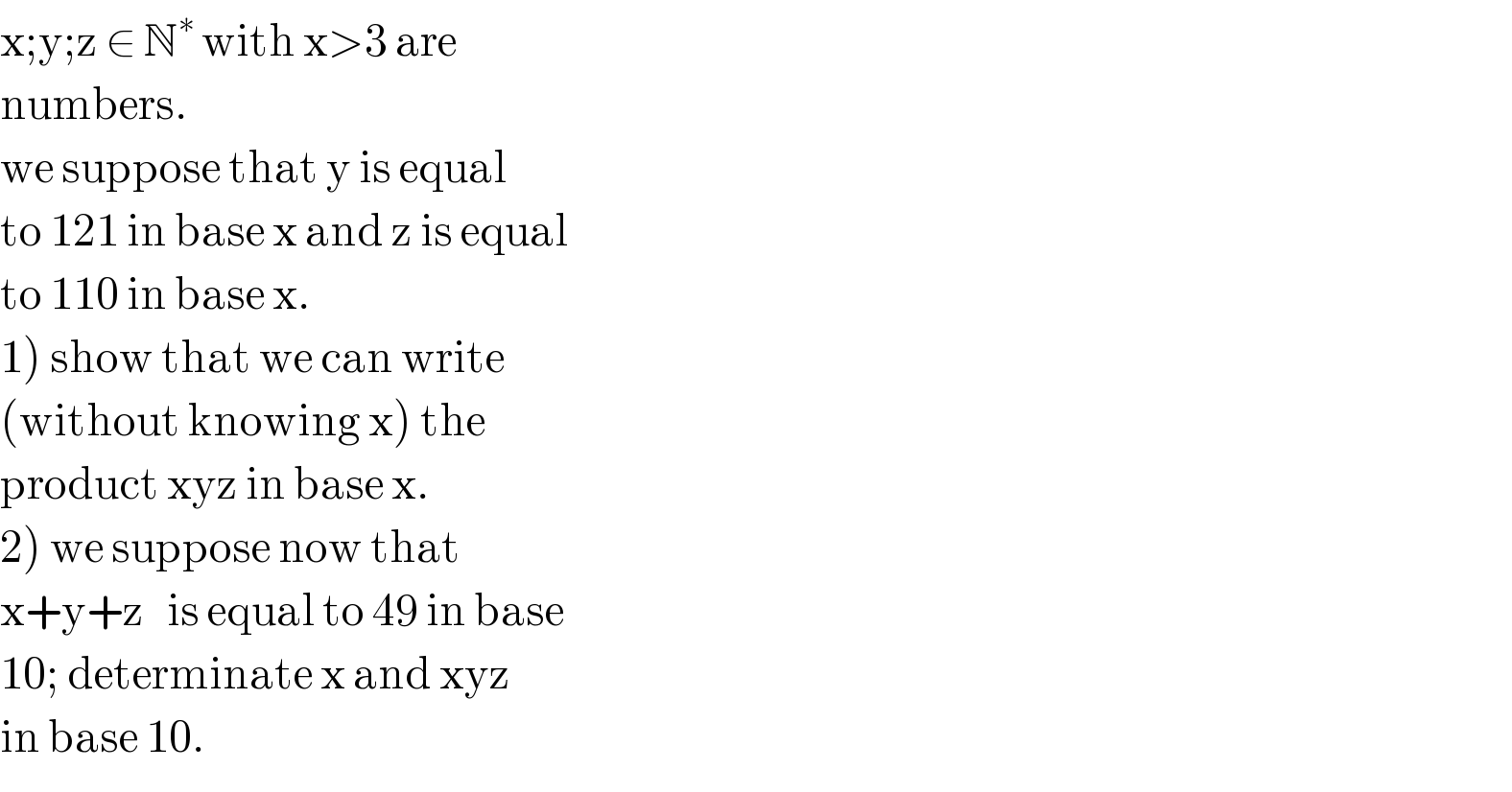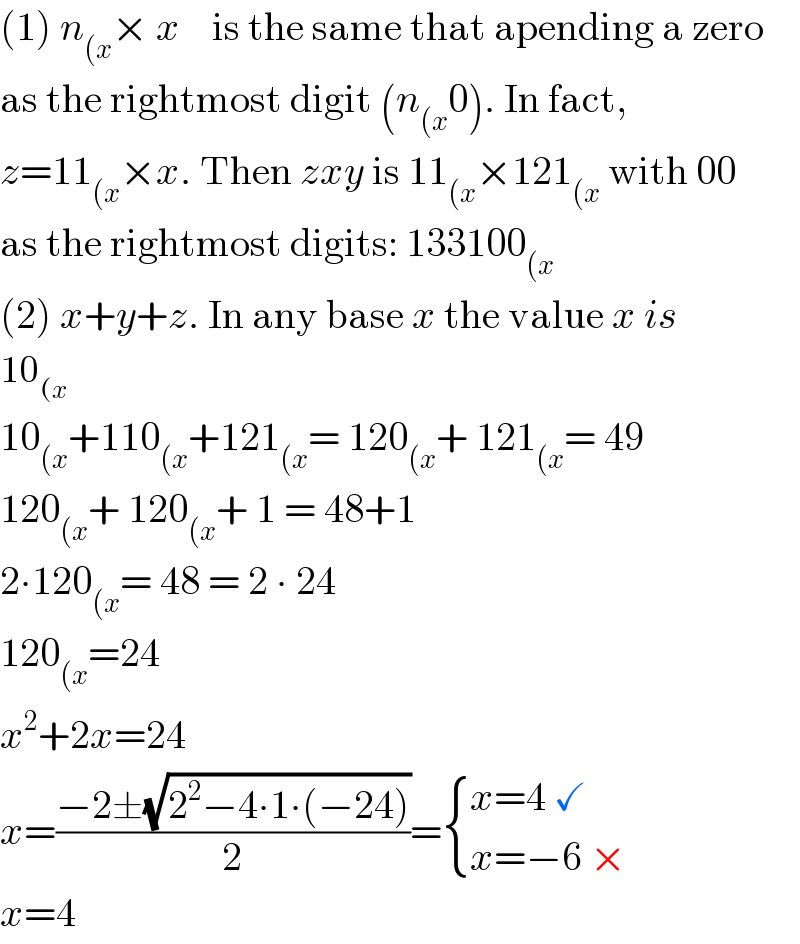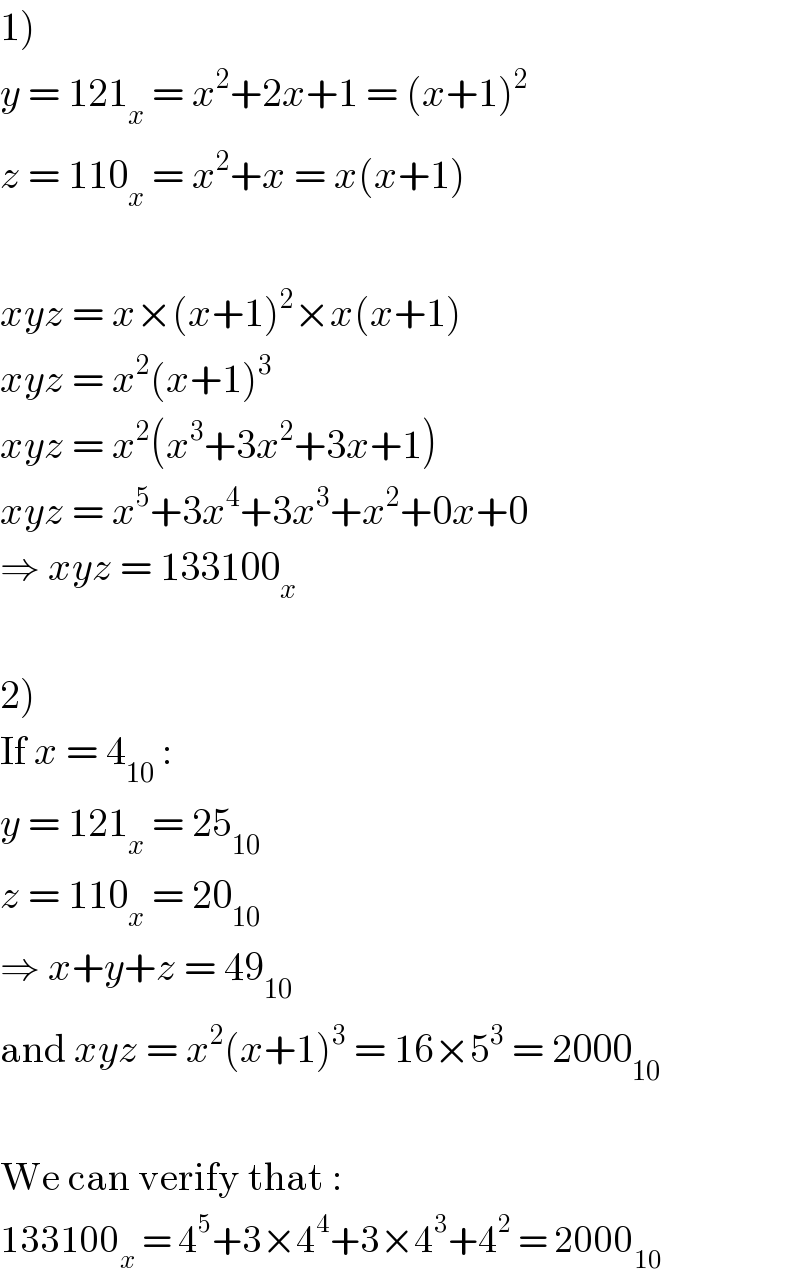
Question and Answers Forum
Question Number 121012 by mathocean1 last updated on 04/Nov/20

Commented bymathocean1 last updated on 19/Nov/20

Answered by JDamian last updated on 04/Nov/20

Answered by Olaf last updated on 04/Nov/20

| ||
Question and Answers Forum | ||
Question Number 121012 by mathocean1 last updated on 04/Nov/20 | ||
 | ||
Commented bymathocean1 last updated on 19/Nov/20 | ||
 | ||
Answered by JDamian last updated on 04/Nov/20 | ||
 | ||
| ||
Answered by Olaf last updated on 04/Nov/20 | ||
 | ||
| ||